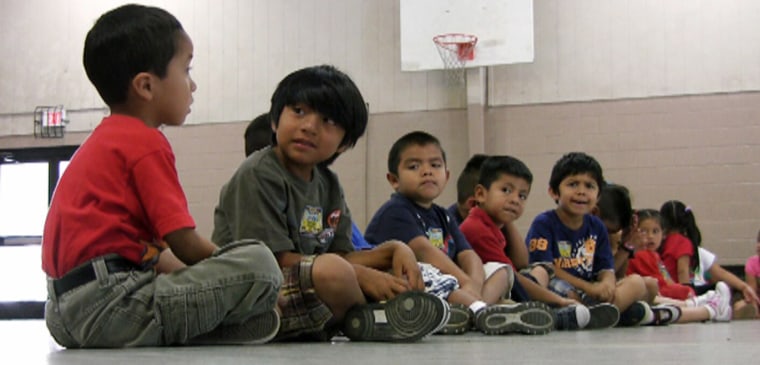About eight-in-ten Latino children face at least one difficult childhood experience and have fewer resources for nutrition, exercise and early childhood learning, especially pre-K, according to a report by Salud America! at UT Health San Antonio. These early roadblocks affect future health and personal development, but researchers say there are solutions that work.
The study, released Tuesday is “a comprehensive research review on what is the current state of early Latino childhood development,” said Rosalie Aguilar, project coordinator for Salud America! and an author of the new research review.

Around 78 percent of Latino kids face at least one adverse childhood experience, which can include poverty, divorce, neglect, abuse or even violence.
“That number was really high and that was quite surprising to see,” Aguilar said.
These experiences have a profound effect on the development of children and can lead to health problems like obesity, anxiety, and aggression.
Learning about the long term impacts that this has on health outcomes such as heart disease, obesity and even cancers were an eye opener for Aguilar.
When it comes to health, researchers say part of the problem is that Latino children tend to live in neighborhoods with less access to healthy foods. They also have limited spaces where they can be active, like parks and recreational facilities.
On the educational front, many Latino children are not on par with their peers when they begin kindergarten. Around 40 percent live in “child care deserts” with few preschools. And largely due to lack of access and because of costs, only 42 percent of Latino kids attend preschool, which makes them unprepared when they begin Kindergarten.
“We actually did find in our research that spending on education that goes towards early childhood development is really important and it seems that there is only room for improvement,” Aguilar said. Only 14 percent of funding toward education goes toward early childhood.
The good news is that there are solutions that mitigate many of the setbacks that young Latinos face.
On the education front, the study found that for every dollar spent on early childhood education, there is a $7 return on investment.
“We really do believe that by working early on to impact the education of these children and to stimulate their minds, we can start seeing some great returns on investment,” Aguilar said.
Other solutions that communities can promote to increase kids' well-being is access to "medical homes" or community health centers that provide care from birth to adulthood, as well as expanded access to good grocery stores and farmers' markets in Latino neighborhoods. Another tool is to encourage access to parks and childhood spaces.
In addition, home visits by qualified health professionals and early childcare from birth to age 5 that is stimulating and educational improves a child's chances of better physical and educational attainment.

